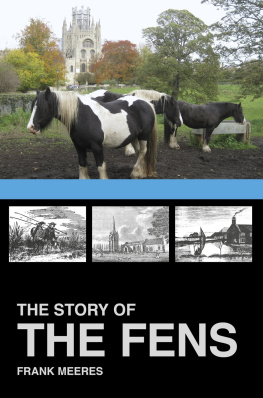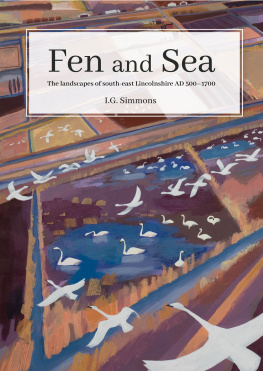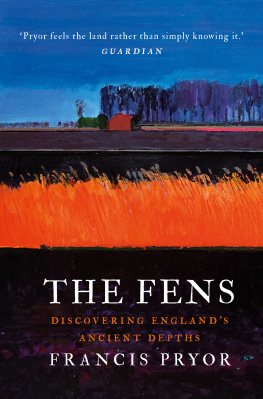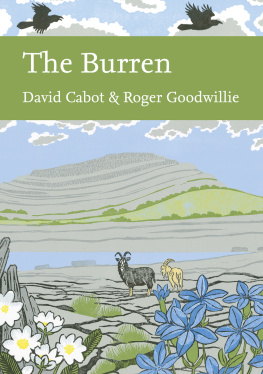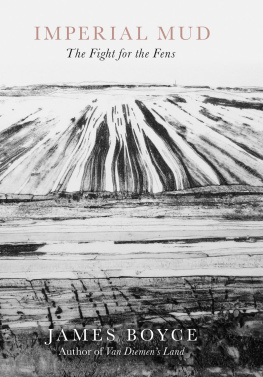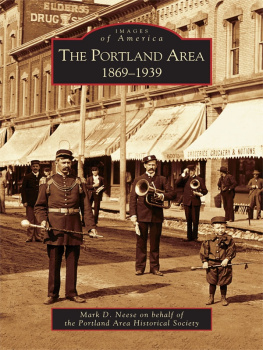Contents
Guide


Back cover image: Boston Stump by Walter Dexter. Image courtesy of Kings Lynn Museums.
First published 2019
The History Press
The Mill, Brimscombe Port
Stroud, Gloucestershire, GL5 2QG
www.thehistorypress.co.uk
Frank Meeres, 2019
The right of Frank Meeres to be identified as the Author of this work has been asserted in accordance with the Copyright, Designs and Patents Act 1988.
All rights reserved. No part of this book may be reprinted or reproduced or utilised in any form or by any electronic, mechanical or other means, now known or hereafter invented, including photocopying and recording, or in any information storage or retrieval system, without the permission in writing from the Publishers.
British Library Cataloguing in Publication Data.
A catalogue record for this book is available from the British Library.
ISBN 978 1 8607 7697 7
Typesetting and origination by The History Press
Printed in Great Britain
eBook converted by Geethik Technologies
CONTENTS
INTRODUCTION
When you work with water, you have to know and respect it. When you labour to subdue it, you have to understand that one day it may rise up and turn all your labours to nothing.
Graham Swift, Waterland
The Fens are perhaps the part of England most altered over the centuries: it is difficult now to imagine a time when the area was largely under water for much of the year, and the inhabitants lived by exploiting a watery environment. Today the Fens are fascinating in a different way, the skies dominating the flat landscape, while the drainage channels and sluices set the hand of man firmly upon the landscape. The area has been a favourite of mine for many years and I have tried to set out its history in this book. I am indebted to many friends with whom I have put up in Fenland homes, and also to Ayscoughfee Hall in Spalding an amazing museum of Fenland heritage uniquely for permission to see some of their images. I have worked for many years as an archivist at the Norfolk Record Office, which has also kindly allowed me to use some images from the archive.

Leisure craft on the Ouse near Ely.

Sheep graze in front of Ely Cathedral.

ORIGINS
Merrily sang they, the monks at Ely,
When Cnut the King he rowed thereby;
Row to the shore, men, said the King,
And let us hear these monks to sing.
Landscape historians like to talk in terms of a pays, a distinctive countryside that is a product of physical differences in geology, soil, topography, and climate, and also of differences in settlement history and rural settlement, which give each pays its distinctive character. Few places today retain such individual character but Fenland certainly does. As the historian Mark Overton writes: the [last] remaining two types of pays are the fenlands and marshlands Fenlands were regularly drowned by overflowing rivers. They were therefore mainly pastoral economies, supplemented by fishing and fowling, but where arable land was available it was often very fertile. The Fens were inhospitable to outsiders, partly because of disease, and were typically peasant communities. The marshlands were also primarily grazing areas, but had more arable land than the fenlands and a more hierarchical social structure. They were also more accessible, less unhealthy and more fully exploited. H.V. Morton was even more emphatic: You must not confuse the fens with the marshes of Lincolnshire. These two words have a meaning in Lincolnshire which does not correspond with the ordinary dictionary version. The marshes border the coast, and were once under the sea; the fen has been reclaimed from the swamp.
The watercourses that run through the Fens have frequently changed throughout the centuries. Ancient river networks can still be seen in aerial photographs, in the form of rodhams or roddons high, silty levees of ancient watercourses left standing above the surrounding surface owing to wastage and also to the sinking of the peat due mainly to modern drainage. Where the watercourse has been abandoned, whether because it has become choked or because an artificial diversion has been created, a central hollow forms the channel, which has normally become filled with peat. Sometimes the two banks still exist as distinct raised features, but very often, especially where the stream was relatively small, they will have merged into one bank of silt. John Clarke, in 1852, was one of the first to draw attention to the feature, correctly suggesting that they were veins of silt but regarding them as tidal deposits rather than freshwater silt: he called them rodhams. Gordon Fowler drew wider attention to their significance in the 1920s and 30s, using the spelling roddon. Both spellings are in use today, with rodham the more common among Fenmen themselves. These silt river skeletons in the soil (as A.K. Astbury calls them) have been used since Roman times as solid foundations on which to build houses.
The outstanding feature of the ancient water system is that almost all the rivers that now run into the Wash at Kings Lynn formerly made their way into a great estuary beginning immediately north of Wisbech: this must be the Metaris described by the Roman geographer Ptolemy. The diversion of the River Ouse to run through Lynn rather than Wisbech is a man-made feature, as we shall see.
The Fens are a large natural depression, inland of the Wash, that was not quite deep enough to be permanently flooded by the North Sea. About 10,000 years ago, at the end of the last Ice Age, the climate grew milder and melt-water from the glaciers caused the sea level to rise. River valleys flooded and became bays, such as the Wash itself. The vast, flat landscape of the Fens was dominated by forest. The lowest lying valleys began to get wetter about 7000 BC: the forest was flooded, the trees died and fell into swamps, which became the fertile peat soils that are so distinctive of the Fens today. Trunks known as bog oaks are often found in the ground by farmers when ploughing: by no means always oaks, these are trees that were drowned when the Fens began to form, or else trees growing in the fen deposits during a dry spell. They have been preserved in the airless waterlogged conditions. When William Dugdale visited the Fens in 1657, he saw for himself oaks that had been taken up near Thorney, and heard stories of many other finds. Local history and archaeology were much more primitive disciplines than they are today, but he was able to draw the correct conclusion: there had been a time in the distant past when the Fens were dry land on which large numbers of trees were growing.
Many bog oaks have been found in the Whittlesey Mere area: these are indeed oaks, and they were growing there around 6,000 years ago. When Alan Bloom ploughed up 18 acres of fen in the Second World War, he found enough bog oaks to make a stack 200 yards long, 5 yards wide and up to 8ft high: one monster was 108ft long!

